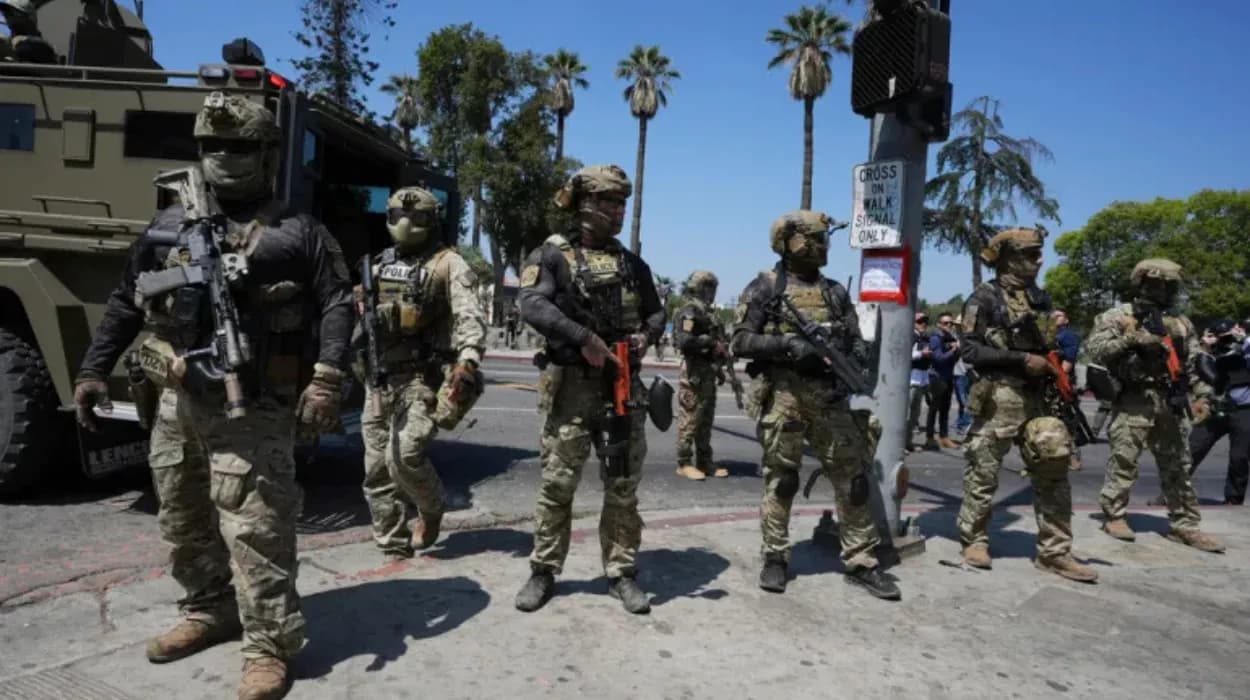Summary
- The Supreme Court allows the Trump administration to resume immigration raids.
- Lifts lower court ban on stops based on race, language, job.
- Ruling split 6-3; liberal justices issue strong dissent.
- Raids criticized as unconstitutional racial profiling and Fourth Amendment violations.
The conservative-majority court overturned limitations on the administration's forceful immigration raid strategy in a 6-3 ruling, enabling agents to target individuals based on linguistic and ethnic characteristics.
The decision "has all but declared that all Latinos, US citizens or not, who work low-wage jobs are fair game to be seized at any time, taken away from work," according to Justice Sonia Sotomayor, who wrote a dissent for the liberal minority.
The Trump administration's claims of presidential authority have hardly ever been restrained by the highest US court.
According to District Judge Maame Frimpong, who claimed there was a "mountain of evidence" that immigration authorities were violating the constitutional rights of Los Angeles residents, Monday's decision nullifies earlier limits.
“The Supreme Court’s order is outrageous because it includes no reasoning itself but puts on hold the well-reasoned opinions of the lower federal courts,”
Cecillia Wang, national legal director of the American Civil Liberties Union (ACLU), a US watchdog group, said in a press statement.
Following the decision, the Department of Homeland Security (DHS) announced on social media that it will keep "FLOODING THE ZONE" in Los Angeles, where most of the individuals detained during immigration raids have no criminal records.
Prior to this, Frimpong had decided that immigration officials could not single out individuals based on their language, ethnicity, occupation, or geography. The Trump administration said that the decision unjustly limited immigration enforcement actions, which have occasionally apprehended and detained US residents and foreign nationals without legal status.
“Individuals with brown skin are approached or pulled aside by unidentified federal agents, suddenly and with a show of force, and made to answer questions about who they are and where they are from,”
a lawsuit brought against the government by immigrant rights groups stated.
The draconian immigration policies of the Trump administration have frequently been motivated by unsupported claims that immigrants are an "invading" force. Officials and government organizations have started using terminology that was previously only used by hard-right anti-immigrant organizations.
Earlier in the day, Trump retweeted a statement on social media that branded immigration a “weapon of mass destruction”.
How does the Court define "totality of circumstances" for stops in this ruling?
In a Supreme Court decision authorizing broad immigration raids in Los Angeles, the Court relied on a well-settled legal principle called "totality of the circumstances." This principle measures whether law enforcement officers had sufficient grounds to stop and detain an individual (for instance, reasonable suspicion or probable cause).
The Court defined "totality of the circumstances" as an analytic approach that considers all the relevant factors and the entire context of a situation, rather than hard bright-line rules or isolated factors.
Examples of evidence including but not limited to: the person's conduct, where they are located, the language they speak, their appearance, or any other contextual evidence that when considered together may justify the suspicion of law enforcement.

